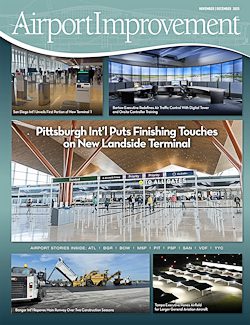McCarran International Airport (LAS) in Las Vegas offers customers and employees in need of immediate medical attention a welcome respite in Terminal 1. The Code 3 Urgent Care, located before the A/B security checkpoint, is the privately owned and operated facility with three patient rooms, an on-site X-ray machine and laboratory.
McCarran International Airport (LAS) in Las Vegas offers customers and employees in need of immediate medical attention a welcome respite in Terminal 1. The Code 3 Urgent Care, located before the A/B security checkpoint, is the privately owned and operated facility with three patient rooms, an on-site X-ray machine and laboratory. In addition to treating ailments such as flu, strep throat, sprains and strains, it also offers employment physicals and drug testing.
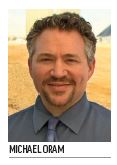 Michael Oram, contract specialist for the Clark County Department of Aviation, believes that the concept is hitting on all cylinders. “We thought (urgent care) was a great idea, as it adds extra value of service to our passengers and our employees, too,” explains Oram. “It is certainly a lot easier to take care of a cold or injury right on site.”
Michael Oram, contract specialist for the Clark County Department of Aviation, believes that the concept is hitting on all cylinders. “We thought (urgent care) was a great idea, as it adds extra value of service to our passengers and our employees, too,” explains Oram. “It is certainly a lot easier to take care of a cold or injury right on site.”
In operation since June 2017, fully 75% of the clinic’s business comes from airport and airline employees; 25% of patients are passengers. This winter, most visits were for basic respiratory and sinus infections, fevers, colds and the flu. “I look forward to being in Vegas through an entire seasonal shift, just to see how things change,” says Adam J. Daley, director of Airport Operations for Code 3 Emergency Partners. Last summer, the staff treated a lot dehydration cases—self-inflicted or otherwise, he notes.
|
facts&figures Project: Urgent Care Clinic Airport: McCarran Int’l, Las Vegas Location: Terminal 1, before TSA checkpoint Service Provider: Code 3 Emergency Partners Facilities: 3 patient rooms; X-ray machine; laboratory; retail sundries
Offerings: Acute medical care; pre-employment physicals & urinalysis drug testing; “concierge Patient Mix: 75% airport & airline employees; 25% passengers Concessions Contract: 7 yrs; airport receives undisclosed percentage of revenues Of Note: Clinic has pre-registration arrangements for airport workers, TSA personnel & employees |
After less than six months, the clinic had a lot of repeat patients coming in for “concierge services” such as restorative IVs and B12 shots. Accidents tend to be the majority of one-off visits, says Daley.
“If somebody falls, sprains an ankle, or if they suddenly have a break, we can take X-rays on site; and we have crutches, slings and boots to help stabilize an injury,” he explains. “If somebody has sliced their finger on a knife while cutting meat in a restaurant, or they get cut on the job, we can provide laceration repairs, stitches, staples, glue…whatever is appropriate.”
Rapid on-site lab testing allows Code 3 to screen for strep throat and flu, as well as provide urinalysis drug testing (pre-employment and post-accident).
Evolution of Care
While this style of urgent care is new to LAS, the concept of on-site medical support is not. Code 3 is the latest in a series of partners providing health care services in the same pre-checkpoint location.
“Many years ago, it originally began as a clinic staffed by the Clark County Health Department,” Oram notes. “What they offered was literally first aid—treating bumps and bruises with Band-Aids, that kind of thing. There were no actual doctors or physician’s assistants, prescriptions being written, or anything like that. That is what it was for many years.”
Eventually, the health department wanted to cut its costs and obligations to focus more on street locations; and the airport had an opportunity to do something more with the concept. “We wanted to add an extra service that most airports don’t have,” explains Oram.
A company called Airport MD occupied the space next, elevating the level of service with doctors of record on site. After Airport MD’s run, from March 2010 to September 2011, the space was converted into a full-service pharmacy and medical clinic.
Valuable lessons were learned from each of the previous healthcare concepts, notes Oram. “Particularly, there are a lot of barriers with the full-service pharmacy as far as people really being able to utilize it,” he explains. Code 3 has a retail section that sells sundries and over-the-counter items. “It is learning the passenger flow and the needs of everyone, to really find that perfect service balance.”
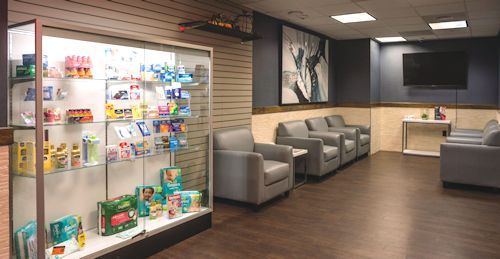
Increased Services
Oram says the clinic’s biggest draw is its ability to offer urgent care services that were previously outsourced beyond the airport grounds. “Code 3 has what you would typically find in a clinic on the street, and they actually even have a little more, with in-house X-ray machines,” he remarks. “That was one of the new things they brought onboard that none of the previous versions had done before. Code 3 has actual MDs, either there or on-call, as well as paramedics and physician’s assistants. It is not quite an ER, but it offers what a normal medical clinic would do with all the typical calls and wellness checks.”
Daley reports that patient volume at the LAS clinic has been on a nice growth trajectory since opening last summer. Month over month, it is averaging a 15% gain in traffic.
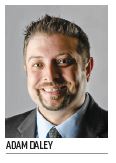
He credits the company’s chief executive, Carrie de Moor, M.D., FACEP, for being a visionary in understanding the complexities of the airport environment and launching the clinic at LAS and its sister location, which opened at Dallas/Fort Worth International in August 2017. “One of the things that really attracted me to the business model was that Dr. de Moor was really intelligent in trying to build these locations from the inside out. Long before we opened the clinics, we made certain that we got in-network with the insurance companies to cover the thousands of folks who work at the airport every day,” Daley explains.
At LAS, specific services are pre-approved by Aetna and United Health Care, and the company has pre-registration arrangements for employees of the Clark County Department of Aviation, TSA, American Airlines, Delta Air Lines, United Airlines and Southwest Airlines.
“Dr. de Moor wanted us to be at a point where it wouldn’t cost these employees any more to walk down the hall and see us at the airport versus taking a half hour to drive across town to go to another urgent care,” explains Daley.
Code 3 also prides itself on shorter wait times than outside urgent care centers. “We try to be as efficient as we possibly can, and we typically can see people in about 20 minutes or less,” he says. “Oftentimes, it is immediate. You walk in, process your paperwork, and you are right back in one of the patient rooms. Typically, we can have them on their way back to the office—wherever the office may be at the airport—by the time they could leave the airport to start their way to get to an offsite facility.”
The company also plans to start marketing to patients in the neighboring community. “I would gladly pay $4 to park at the airport and be seen in 20 minutes, as opposed to having to go sit for two or three hours in a waiting room somewhere else,” reasons Daley. “Once we have built our core business, we can continue to expand our offerings and really see what each of the airports need and tailor our model to really provide what is best for them.”
Cincinnati Int’l Raises its Hand to Help Teach CPR
|

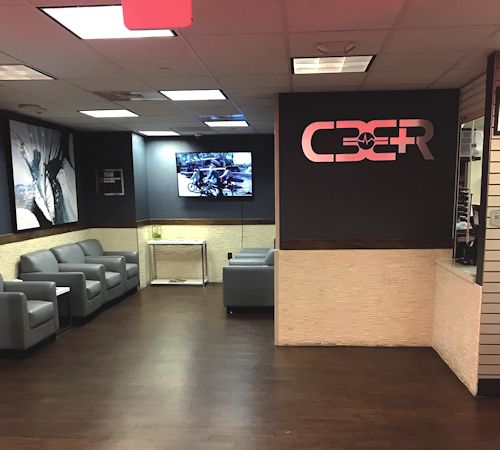
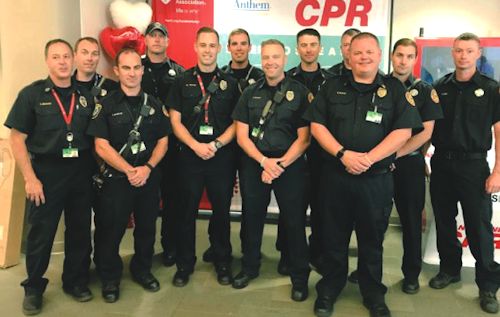
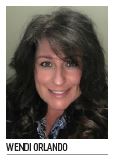 “It’s a good opportunity for travelers to practice,” Orlando says.
“It’s a good opportunity for travelers to practice,” Orlando says.
 The airport’s emergency response team was excited about the program from the very beginning. “Hands-Only CPR is a good skill to know, and it continues along with our commitment to life safety,” explains Fire Department/EMS Division Battalion Chief Dave Stoeckle. “We already have over 50 automated external defibrillators throughout the airport, and their significance has been proven. We have a 100 percent save rate, with over 15 cardiac arrests we’ve had on the airport; and the biggest reason for that perfect success rate of survival of a victim is because of fast bystander CPR and implementation of the AED.
The airport’s emergency response team was excited about the program from the very beginning. “Hands-Only CPR is a good skill to know, and it continues along with our commitment to life safety,” explains Fire Department/EMS Division Battalion Chief Dave Stoeckle. “We already have over 50 automated external defibrillators throughout the airport, and their significance has been proven. We have a 100 percent save rate, with over 15 cardiac arrests we’ve had on the airport; and the biggest reason for that perfect success rate of survival of a victim is because of fast bystander CPR and implementation of the AED.
